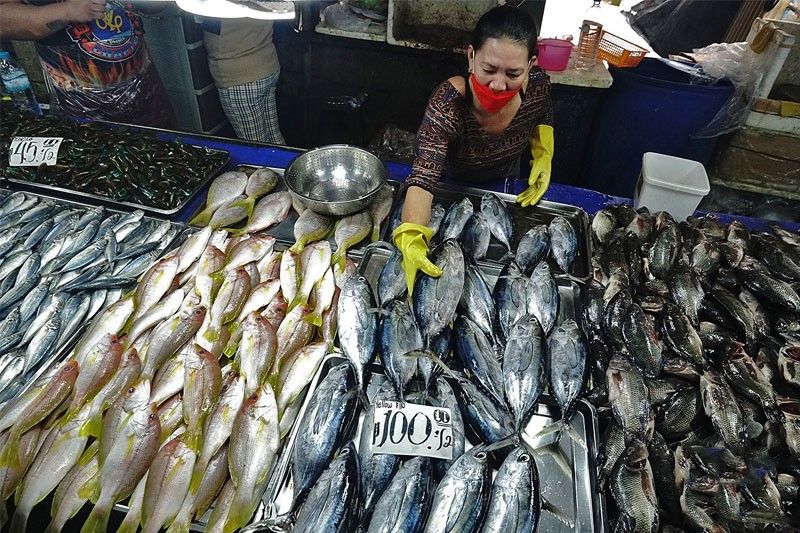Fish unloading volume down in August

MANILA, Philippines — Fish unloading volumes declined in the country’s eight regional fish port complexes in August due to several storms that hit the country, the Philippine Fisheries Development Authority (PFDA) said.
According to the PFDA, the country’s regional fish ports weathered three tropical depressions and one super typhoon that entered the Philippine Area of Responsibility.
Because of this, the fish loading volumes fell by 14 percent to 48,096 metric tons (MT).
Of the eight fish ports, five reported higher deliveries while the remaining three were severely affected by the weather conditions.
The General Santos Fish Port Complex recovered from last month’s dip, delivering 23,034.02 MT of fish, a 4.32 percent increase.
The fishing season reopened in the Davao Gulf, allowing the Davao Fish Port Complex to almost triple its monthly unloading volume to 2,393.83 MT.
The Zamboanga Fish Port Complex and Sual Fish Port also recovered following last month’s slip, unloading 560.28 MT, a 12.8 percent increase, and 422.03 MT, a 36.25 percent increase, respectively.
The Iloilo Fish Port Complex (PFDA-IFPC) also managed to recover from a previous slump despite heavy rains brought by several weather disturbances, recording a 5.3 percent rise in deliveries to 2,073.47 MT of fish.
On the other hand, the Navotas Fish Port Complex suffered a setback in its monthly unloading volume due to severe weather conditions, but still unloaded the second-highest volume at 16,702.629 MT.
The Lucena Fish Port Complex and the Bulan Fish Port Complex have both experienced a decline in their monthly unloading due to the dangers posed by month-long strong winds and heavy rains to fishing vessels and port activities.
The Lucena port delivered 2,162.88 MT while the Bulan port unloaded 746.87 MT of fish.
Meanwhile, the Bureau of Fisheries and Aquatic Resources (BFAR) expects a favorable trend on fish sufficiency and a stable price of fish commodities towards the end of the year.
This, as it plans to put in place more programs on fish production, along with other programs on post-harvest and marketing and resource management.
BFAR said it is upgrading its programs in order to sustainably maximize the potential of the country’s fisheries resources, increase production, and ensure a sufficient supply of fish commodities for Filipinos.
Part of the program is the improvement and expansion of the utilization of fish aggregating devices (FADs) in strategic fishing areas in the country.
FADs, a technology that attracts high-value fish species, also provide fishers with a precise fishing area, effectively cutting down production costs including fuel consumption.
The agency has also already set its sights on further developing the aquaculture subsector by upgrading the National Fish Broodstock Development Program to include high-value marine species such as siganids, snappers, pompano, groupers, and seabass.
Through this program, more Filipino fisherfolk will be able to locally source out quality fry or fingerlings at an affordable rate.
Latest data released by the Philippine Statistics Authority showed the recorded inflation for fish and other seafood commodities decreased from 9.2 percent in July to 7.2 percent in August.
The same report indicated a drop in national food inflation to 6.5 percent in August from the previous month’s 7.1 percent.
Inflation in the bottom 30 percent income households has likewise slowed from 6.1 percent to 5.7 percent. In this demographic, the inflation for fish and other seafood commodities has also decreased from 8.4 percent to 5.5 percent.
Among the factors attributed to its decline is the decrease in the prices of oil, a commodity which the fisheries sector, especially capture fisheries, is generally dependent on. With the prices of oil gradually decreasing, more fishers were able to venture out to the sea to fish.
BFAR welcomed this positive development and has committed to working better and harder in order to ensure an ample supply of fish in markets and keep the prices of fish commodities at a stable level in the months to come.
- Latest
- Trending
























